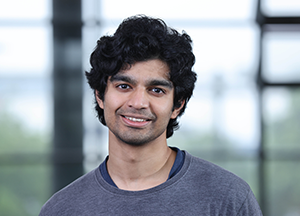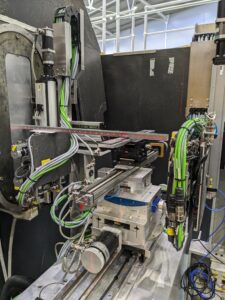 Sangeet Kumar was the inaugural intern for the FLEET internship program, working at ANSTO, performing neutron reflectrometry experiment to study ion-beam modified 2D materials. Sangeet reports back on whart he learned:
Sangeet Kumar was the inaugural intern for the FLEET internship program, working at ANSTO, performing neutron reflectrometry experiment to study ion-beam modified 2D materials. Sangeet reports back on whart he learned:
“I recently finished my two-month FLEET ANSTO internship at Lucas Heights, NSW. I’m grateful for the financial support provided by FLEET as an additional stipend, and for ANSTO’s support with my travel and accommodation. I had the opportunity to work under the supervision of Dr. David Cortie and Dr. Zeljko Pastuovic on low energy ion beam implantation and neutron reflectometry.”
“It was an exciting experience working beside an actual nuclear reactor, the Open Pool Australian Lightwater (OPAL) reactor, which provides the source of neutrons for irradiation and material analysis.
“My internship focused on techniques for the modification, analysis, and modelling of 2D materials. Ion beam implantation of 2D materials requires shallow depths with beam energies below 10 keV, a range rarely explored in many implanters. I had the opportunity to trial ultralow energy ion implantation under 10 keV, using the Metal Vapour Vacuum Arc (MEVVA) implanter and Low Energy Ion Implanter (LEII) to help benchmark their performance. I also experienced analysis techniques such as X-ray reflectometry and neutron reflectometry on the Spatz instrument.”
“Apart from the hands-on work, one of the enjoyable parts of my internship was learning the CAD-based finite element modelling software COMSOL Multiphysics, which allows you to model physical mechanisms and their interlinking physics. We used it to model the magnetic field profiles of the solenoid-based neutron guides of the Platypus instrument and to create an initial model of the electrostatic ion beam deceleration lens of the LEII, for their optimization and upgrades. Overall, it was a wonderful experience and definitely broadened my knowledge of scientific techniques.”


